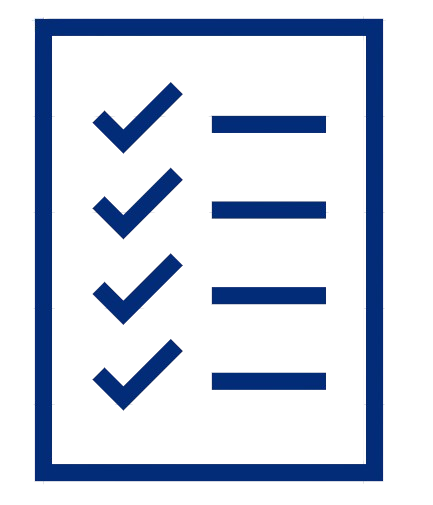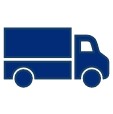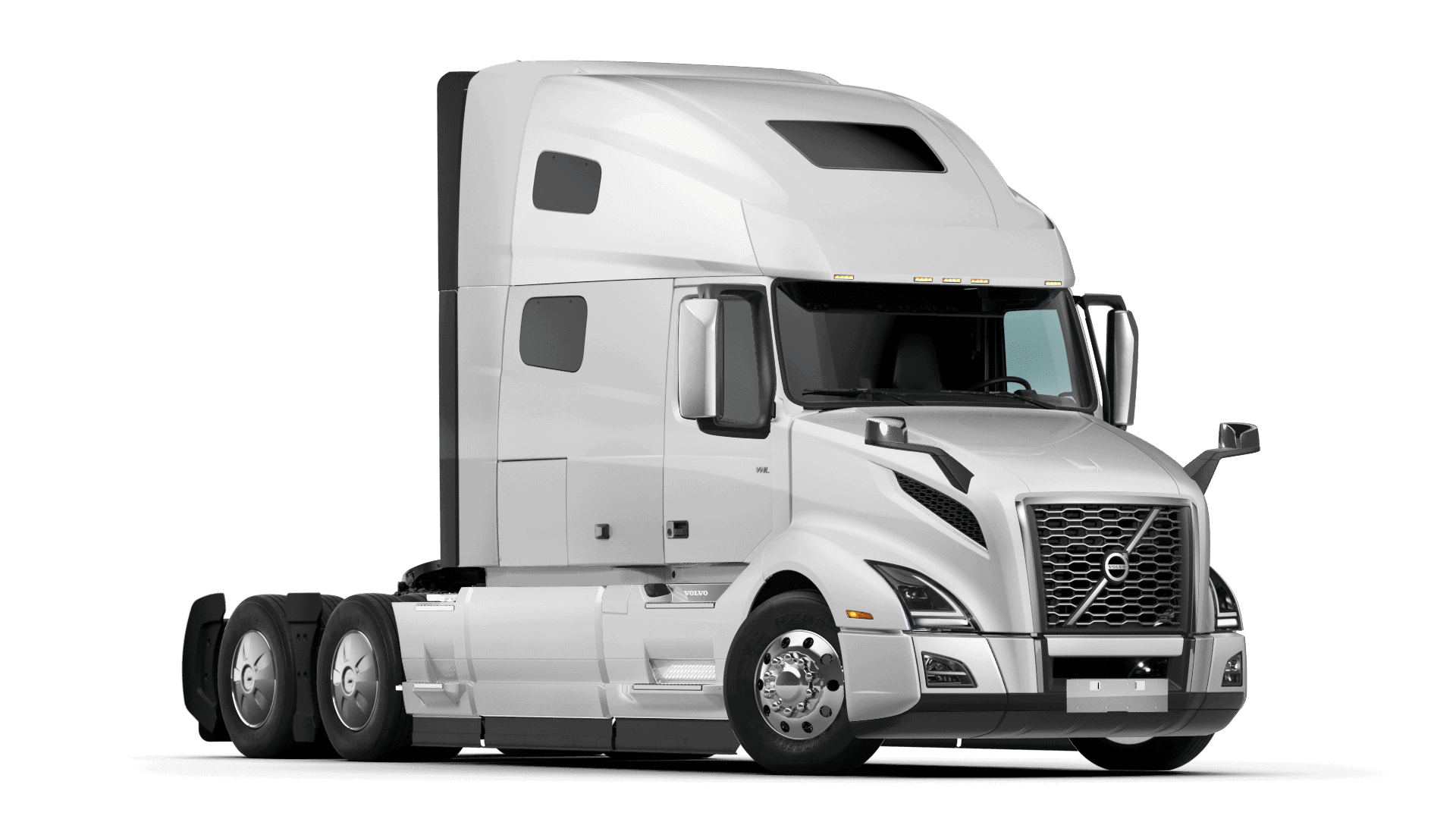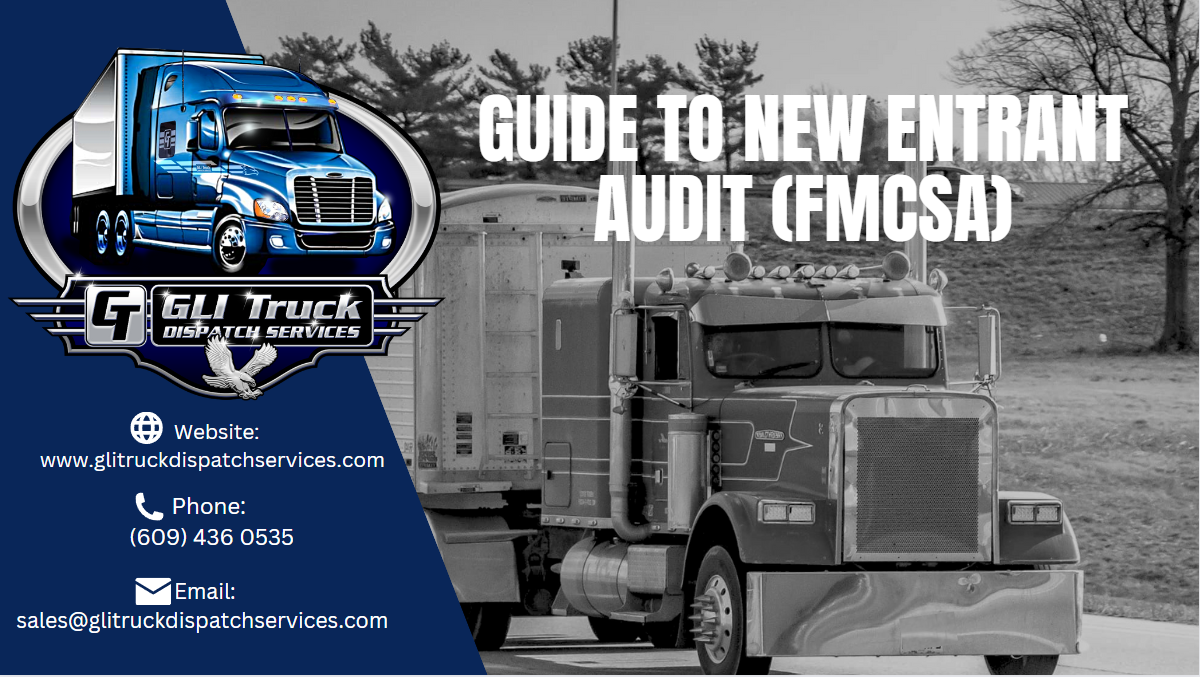
New Trucking Authority
How to Start Your Own Trucking Authority – A Complete Step-by-Step Guide (2025 Update)
Starting your own trucking authority is a major step toward operating independently in the logistics industry. At GLI Truck Dispatch, we’ve outlined the current FMCSA registration and compliance process to help new carriers understand each stage — from business formation to authority activation — ensuring your company is properly licensed, compliant, and ready to operate nationwide. GLI provides dedicated assistance throughout this process, guiding new carriers step-by-step to help them register, set up, and launch their authority with confidence.

Step 1: Register Your Business Entity
Before applying for your trucking authority, you need to legally establish your business. Most owner-operators choose to form a Limited Liability Company (LLC) for its simplicity and liability protection, though larger operations may prefer an S-Corp or C-Corp for tax or investment flexibility.
Register your company with the Secretary of State in your home state and pay the applicable filing fee. Afterward, obtain an Employer Identification Number (EIN) from the IRS — this serves as your company’s federal tax ID. You’ll need your EIN to open a business bank account, apply for FMCSA authority, and file taxes.

Step 2: Apply for Your USDOT and MC Number via the FMCSA Unified Registration System (URS)
To operate a for-hire trucking business across state lines, you must register with the Federal Motor Carrier Safety Administration (FMCSA) for two identifiers: USDOT Number – identifies your company for safety and compliance monitoring.MC Number – grants your business “operating authority” to haul freight for hire.
As of 2025, all new applications must be completed through the FMCSA Unified Registration System (URS). The URS replaces older paper forms and now includes a mandatory identity verification process.During your URS application, you’ll provide business details, cargo types, and operation classification. The fee for MC authority remains $300, and is non-refundable. Your authority will remain pending until both your insurance and BOC-3 filings are approved by FMCSA.

Step 3: Secure Commercial Trucking Insurance
FMCSA requires all for-hire carriers to have active commercial auto liability insurance before authority activation.Minimum coverage: $750,000 (most shippers and brokers expect $1 million).Higher coverage is needed for hazardous materials or passenger carriers.Your insurance company must electronically file proof of coverage using Form BMC-91 or BMC-91X through FMCSA’s system. This must be submitted via an authorized e-filer.

Step 4: File Your BOC-3 (Designation of Process Agents)
A BOC-3 (“Designation of Agents for Service of Process”) is required for all motor carriers, brokers, and freight forwarders. It designates a legal representative in each state who can receive compliance or court documents on your behalf. Only a third-party BOC-3 filing service (called a “blanket agent”) can submit this electronically — the carrier cannot file it directly. The filing fee typically ranges from $25–$100 for all 50 states. Once both your insurance and BOC-3 are filed, FMCSA begins a 21-day vetting and approval period before your operating authority becomes active.

Step 5: Register for IFTA (International Fuel Tax Agreement)
If your truck has three or more axles or a gross vehicle weight of 26,000 lbs or more, and you operate interstate, you must register under the International Fuel Tax Agreement (IFTA). Register through your base state’s motor vehicle department. Once approved, you’ll receive IFTA decals for your truck and access to file quarterly fuel tax reports. Maintain accurate mileage and fuel receipts — missed or inaccurate filings can trigger costly audits. Even if you don’t operate in a quarter, you must file a zero report to stay compliant.
Step 6: Register for IRP (International Registration Plan)
The International Registration Plan (IRP) lets carriers operate across U.S. states and Canadian provinces with one apportioned plate and cab card. Register through your base state, providing your business registration, truck title or lease, proof of insurance, and IRS Form 2290 for heavy-vehicle tax. Mileage records may also be required. Once approved, your apportioned plate and cab card list all jurisdictions where you’re authorized to operate.

Step 7: Register for UCR (Unified Carrier Registration)
The Unified Carrier Registration (UCR) program requires all interstate carriers, brokers, and leasing companies to register each year and pay a small fee based on fleet size. Registration is completed online through UCR.gov, with the 2025 fee for one or two trucks set at about $43, due by December 31 annually. Staying current with your UCR filing is essential—operating without it can lead to fines and roadside enforcement penalties.

Step 8: File IRS Form 2290 – Heavy Vehicle Use Tax (HVUT)
If your truck has a gross vehicle weight of 55,000 pounds or more, you’re required to file IRS Form 2290 and pay the annual Heavy Vehicle Use Tax (HVUT). The form can be submitted electronically through the IRS website or an approved e-filing provider, with tax amounts ranging from $100 to $550, depending on your vehicle’s weight. Once payment is processed, you’ll receive a stamped Schedule 1, which is necessary to complete your IRP registration. The annual filing period runs from July 1 to August 31, and timely submission helps avoid penalties or registration delays

Step 9: Enroll in a DOT-Compliant Drug & Alcohol Testing Program
All CDL drivers, including owner-operators, must participate in a DOT-approved Drug and Alcohol Testing Program to meet FMCSA safety regulations. Before operating, you must complete and pass a pre-employment drug test, then remain enrolled in a random testing pool throughout the year. Even if you’re the only driver in your company, this requirement still applies. You’ll also need to register with the FMCSA Drug & Alcohol Clearinghouse to report and check violations. Keeping accurate testing records is crucial—failure to comply can lead to fines or suspension of your operating authority.

Step 10: Prepare for the FMCSA New Entrant Safety Audit
After your authority becomes active, your company enters an 18-month monitoring period under the FMCSA New Entrant Program. Within the first year, you’ll undergo a safety audit to ensure compliance with federal regulations. To prepare, keep accurate driver files, hours-of-service logs, maintenance records, and proof of insurance, IFTA, IRP, and UCR registrations. Passing this audit is essential to keep your authority active—non-compliance can lead to a required Corrective Action Plan or suspension of your operating authority.
Trucking Services We Offer to New Carriers

Dispatch Service
We connect you with freight brokers that work with new MC and negotiate top-paying loads, helping new carriers stay loaded and busy from day one.

Accounting
Our accounting team manages invoicing, broker payments, and monthly reporting, ensuring your finances stay organized and your cash flow steady.

Compliance
We handle safety audits, driver files, insurance renewals, and FMCSA updates so your authority remains active and fully compliant.

Branding
Build your carrier identity with a professional logo, your own domain email signature and digital presence that makes brokers and shippers take notice.
Comparison - Owning Your Own Authority vs Leasing Onto a Carrier
| Category | Owning Your Own Authority | Leasing Onto a Carrier |
|---|---|---|
| 1. Control & Independence | Full control over loads, routes, and business decisions. You choose brokers, customers, and rates. | Must follow the carrier’s dispatch, rate structure, and company policies. Limited independence. |
| 2. Revenue & Profit Potential | Keep 100% of gross revenue (minus expenses). Higher earning potential once established. | Receive a percentage or mileage pay from the carrier. Lower revenue and potential lack of transparency. |
| 3. Compliance & FMCSA Responsibility | You are directly responsible for safety compliance, insurance, IFTA, IRP, UCR, and recordkeeping. | The carrier handles most compliance and filings; you operate under their authority and insurance. |
| 4. Startup Costs & Administration | Higher upfront costs for insurance, filings, and permits. More paperwork and management required but better visibility of what is needed to operate. | Lower initial costs since the carrier covers filings and insurance, but reduced autonomy with potentially higher deduction from revenue amount. |
| 5. Broker & Shipper Relationships | Build your own broker network and long-term shipper relationships. Brand your business independently. | All loads and relationships go through the carrier; you can’t contract directly with brokers. |
| 6. Growth & Business Flexibility | Ability to expand your fleet, hire drivers, and operate multiple trucks under your authority. | Restricted to operating under one carrier’s authority — limited scalability and highly dependent on carrier for loads. |
| 7. Brand Identity | Operate under your own company name, USDOT, and MC number and build long-term business equity with brokers and shippers. | You run under the carrier’s branding and MC; little to no brand recognition for your company from shippers or brokers. |
| 8. Business Credit Score | Your business builds its own credit profile — essential for factoring, fuel cards, and equipment financing. Strong credit helps lower costs and expand faster. | You operate under the carrier’s credit. Your business doesn’t establish its own financial reputation or credit history. |
Get in Touch

Fill it up the Contact Form – and we will schedule a session with you to address any questions and concerns you may have operating on your own authority. GLI’s consulting team helps new carriers understand the realities of running independently, offering insights on dispatch, operations and compliance practices that keep your business profitable and protected.
Send Us a Message
By providing a telephone number and submitting the form you are consenting to be contacted by SMS text message. Message & data rates may apply. Reply STOP to opt out of further messaging. For more details, please review our Privacy Policy.
New Trucking Authority Service - Resource and Guides

Major Cost Breakdown for Owner Operators
Detailed in this article are the major cost breakdown of operating a trucking company Owner Operators should know

FMCSA New Entrant Safety Audit
Comprehensive guide on FMCSA New Entrant Safety Audit for new Owner Operators or Carriers and how new Trucking Businesses can prepare themselves to succeed in these audits.

Trucking Insurance Comprehensive Guide for Owner Operators
Comprehensive Trucking Insurance Guide to help Owner Operators understand the types of trucking insurance, its cost and the process of securing a competitive policy for their trucking business
